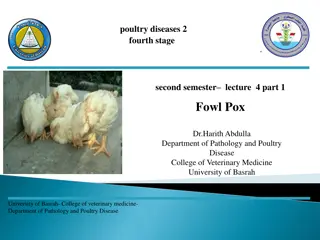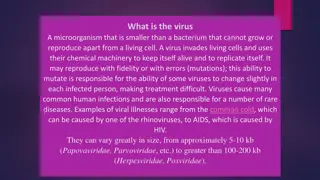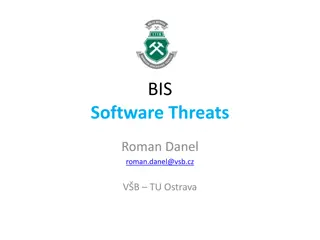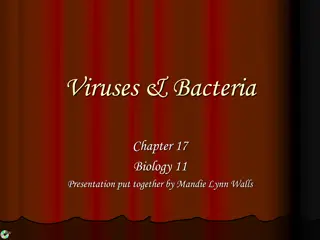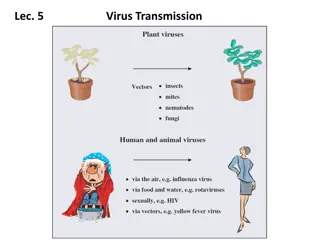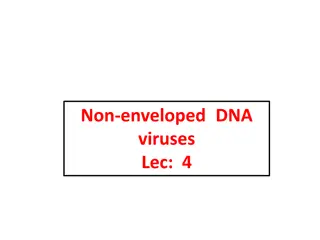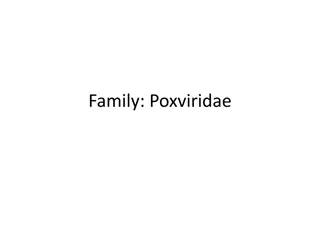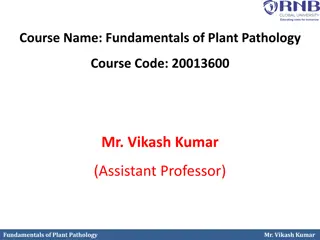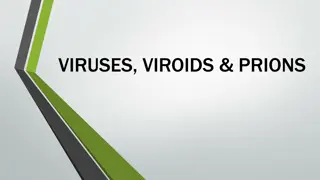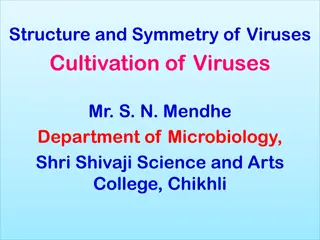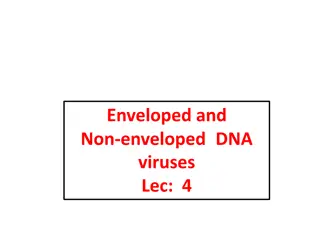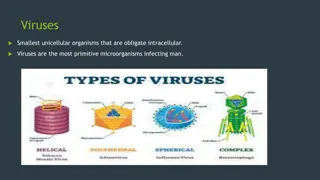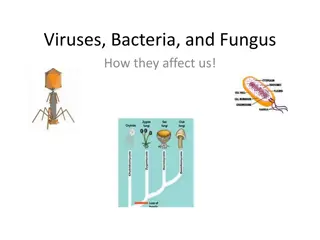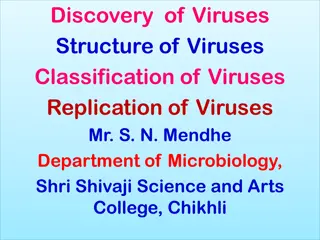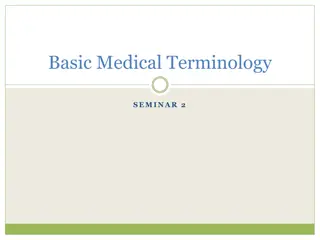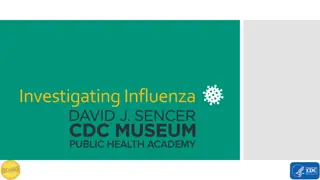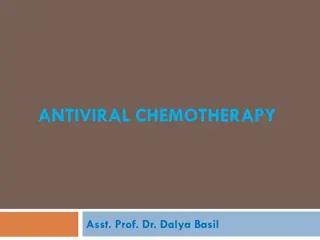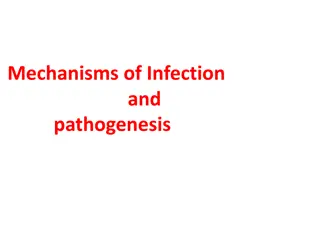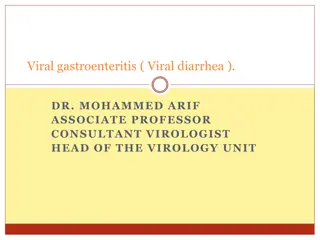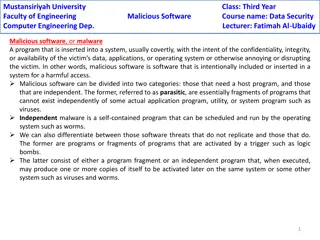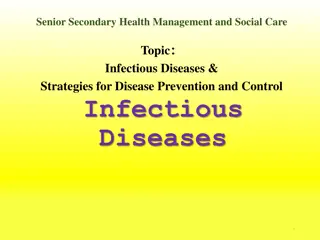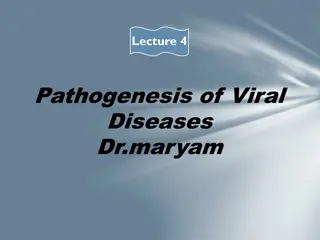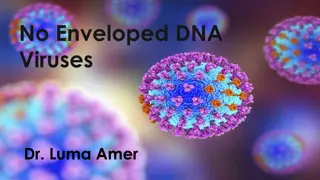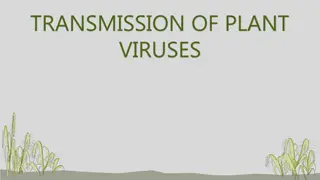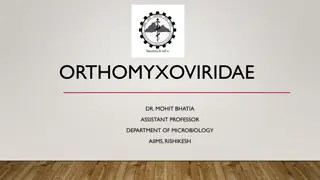Understanding Chicken Pox: A Seminar on the Medical Importance of Viruses
Chicken pox, caused by the Varicella-zoster virus, is a contagious infection primarily affecting children. This seminar presentation delves into the classification, route of infection, symptoms, and treatment of this viral disease common in Africa. The Varicella-zoster virus, a member of the herpes virus family, is known to cause the characteristic itchy rash associated with chicken pox, which spreads through airborne viral particles. Understanding the pathogenicity and control measures of this virus is vital for effective prevention and treatment strategies.
Download Presentation

Please find below an Image/Link to download the presentation.
The content on the website is provided AS IS for your information and personal use only. It may not be sold, licensed, or shared on other websites without obtaining consent from the author. Download presentation by click this link. If you encounter any issues during the download, it is possible that the publisher has removed the file from their server.
E N D
Presentation Transcript
A SEMINAR PRESENTATION: MEDICAL IMPORTANCE OF VIRUSES ON A VIRUS DISEASE COMMON TO AFRICA CHICKEN POX BY EJIBUNU NAZIRAT ADEREWA 15/SCI05/007 MICROBIOLOGY
Table of content Introduction Virus classification Type of disease Route of infection Pathogenicity of the virus Symptoms Treatment and Prevention Control measures conclusion
INTRODUCTION Chickenpox is a vial infection that causes an itchy rash of spots all over the body and flu-like symptoms. Chickenpox is a very contagious infection caused by the Varicella-zoster virus. It mainly affects kids, but adult can get it too. This virus also can cause a painful skin rash called shingles (herpes zoster)later in life. Chickenpox is believed to have been first described by Giovanni Filippo during the 1500s in Italy. In the 1600s, and English physician named Richard Morton gave the name chickenpox to what he thought was milder from smallpox. It is believed that in the 1700s, William Heberden, was the first physician to prive that chicken pox was actually different from smallpox. Chickenpox is an airborne disease which spreads easiky through the coughs and sneezes of an infected person.
Photo of chicken pox: How to Recognize the Rash
VIRAL CLASSIFICATION Varicella zoster virus or varicella-zoter virus is one of eight herpes viruses known to infect humans. Scientific name: Human herpesvirus 3 Rank: Species Higher classification: Varicello virus
TYPE OF DISEASE Chicken pox is a highly contagious disease caused by the Varicella-zoster virus (VZV), a type of herpes virus. It generally strikes children younger than 15
ROUTE OF INFECTION The virus is transmitted by airborne viral particles shed from the skin of an infected person. The new host breathes in the viru, which enters the mucous membrane in a person s respiratory tract and begins to spread without its envelop from cell to cell. The virus invades T-cells of the blood and those T-cell carry the virus to the skin. There, the virus can recreate its envelop because the top layer of the skin lacks the endosomal pathway that removes glycoproteins from the envelop.
PATHOGENICITY OF THE VIRUS Varicella- Zoster virus has an incubation period of about 10- 21days and is most contagious through physical contact a few days before symptoms occur. During this incubation period, the virus spreads to the lymph nodes, the liver and the lungs. This process is known as primaryviremia. As the incubation period pregresses, the virus makes its way to the skin via bouth CD4+ and CD8+ T cells, initiating secondary viremia. As the infection progresses, small skin vesicles filled with pus and infected cell particles form on the skin surface. These lesions are the pox of chickenpox.
SYMPTOMS Feeling tired and generally unwell A high temperature(fever) of 38C (100.4F) or over Feeling sick Headache Aching, painful muscles Loss of appetite Itching Sore throat Swollen lymph nodes Vomiting Dehydration Diarrhea
TREATMENT Treatment involves keeping the person as comfortable as possible. Here are things to try: Avoid scratching or rubbing the itchy area. Keep figernails short to avoid damaging the skin from scratching. Wear cool, light, loos bedclothes. Avoid wearing rough clothings, particularly wool, over an itchy area. Take lukewarm baths using little soap and rinse thoroughly. Try a skin soothing oatmeal or cornstarch bath. Apply a soothing moisturizer after bathing to soften and cool the skin. Avoid prolonged exposure to excessive heat and humidity. Try over the counter hydrocortisone cream on itchy areas.
PREVENTION Stay away from school or work Avoid contact with people at risk Clean and wask regularly Chickenpox vaccination Keeo your immune system strong Talk to your doctor about aniviral drugs
CONTROL MEASURES Isolation of persons with the virus Vaccinate persons without evidence of immunity Disinfect your house and hands Notification.
CONCLUSION Chickenpox is a common illness that mainly affects children and causes an itchy spotty rash . Most children will catch chickenpox at some point. It can also occur in adult who didnt have it when they were a child. Anyone can get chickenpox.



